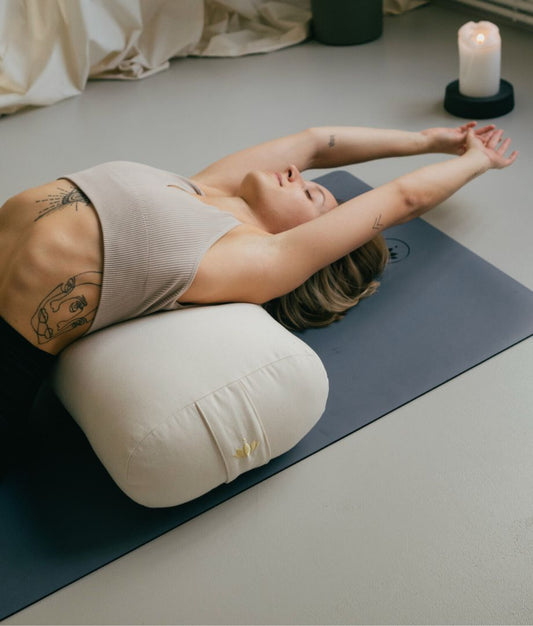
Set-Offers
Save when you buy a set
Shopping cart
Your shopping basket is empty
Yoga
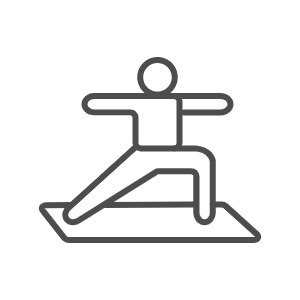
Meditation
Yoga Sets
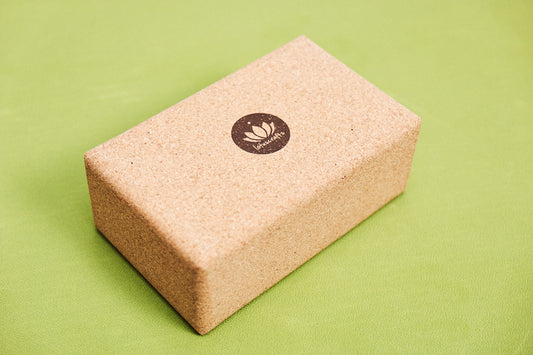
| Yoga
Many positions in yoga not only require our full attention, but also the strength of our muscles and an open body. Due to constant sitting and working at a desk, we western yogis in particular need to balance our work on the yoga mat. But our body is not always open wide enough. As explained in the last article , the goal is not to force the body into every imaginable pose. Tools are a great solution and support for your practice. Whether you are a beginner or an advanced trainer, everyone should have a yoga block at home.
A yoga block is versatile and serves as a support for simple and complex asanas. The yoga block, for example, is perfect as a base for your seat . Especially if your hips are not quite that wide, the yoga block will help you to raise your seat both cross-legged and heel-seated. With the help of the block you can sit up straight and fully and devote yourself to your meditation and pranayama practice.
Whenever your arms feel too short, the block is a kind of extension . In forward bends and twists, you can use the block to prop up your hands for better alignment. It's perfectly normal not to be able to touch the ground in every position at first. Even if balance and balance are required, make it easy for yourself and use the blog.
In lying Yin poses, the block helps you to let go better. If you place a yoga block diagonally under your head and one long between your shoulders, your entire shoulder area can open up more and your heart region becomes freer.
But the blog is also useful for activating your muscles. For example, if you want to consciously pull everything towards the midline, you can bring the blog between your legs in Utkatasana, for example, to activate your inner muscles more.
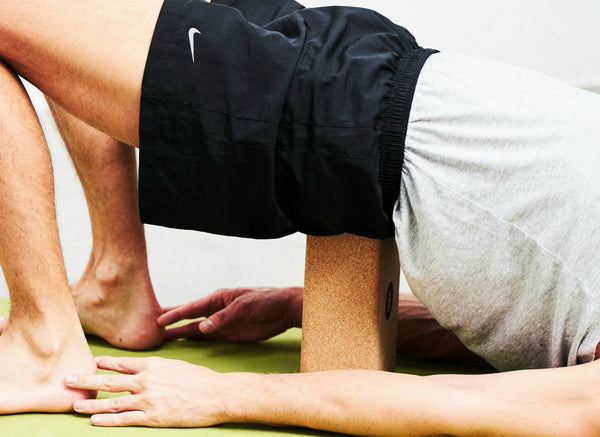
In shoulder bridge, you can place the block under your sacrum for support.
For shoulder bridge, come to your mat on your back, bend your knees, and plant your feet. Choose the distance so that you can reach the soles of your feet with your hands. Your shoulders are on the floor and pressing into the mat. Direct your gaze upwards, making sure to leave some space between your chin and chest by raising your gaze.
As you inhale, raise your pelvis off the floor and bring the yoga block under your sacrum. You can set up the block across or use it at the highest level as shown in the picture. Now hold the shoulder bridge for about five breaths.
Put the block aside and let your pelvis sink relaxed onto the mat. Take three deep breaths. Repeat the shoulder bridge with block twice more for about five full and relaxed breaths each.
The shoulder bridge is a good exercise to calm your nerves and relax the mind. The weight should be resting on your shoulders in the shoulder bridge. The block will help you hold the shoulder bridge more easily and let the weight sink into the block. You can gradually try to practice the asana without a block.
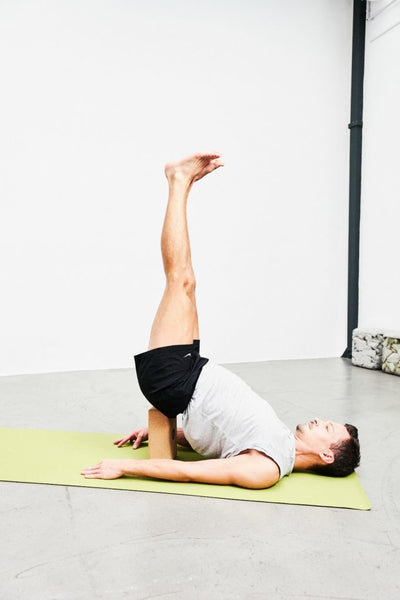
The half candle is a good preparation for the full shoulder stand and an asana that can be practiced wonderfully with a block. People with a herniated disc or neck problems often have difficulties doing shoulderstand, because the weight is on the shoulders. The block allows even beginners to reap the benefits of this exercise.
To do this, first lie on your back on your mat and take a few deep breaths. Relax and come to rest. Position your legs as you would for the shoulder bridge and raise your pelvis.
Now take the block and bring it vertically or horizontally under your sacrum . Exhale and lower the weight into the block. Drop your arms to your sides, open your palms up, and hold the position for five to ten breaths.
Come out of the pose by slowly bending your legs and bringing your feet back to the mat.
Viparita Karanih has a stress-reducing effect and provides more emotional stability. In this position, your blood circulation is promoted because your legs are above the heart. This relieves the strain on the heart and circulation.
Trikonasana is a standing yoga pose that stretches your sides and legs. The triangle occurs in almost every yoga class - but the exercise is a challenge, especially for beginners. In this pose, the block serves as an extension to the floor and allows you to straighten your upper body better.

For this pose, first come into Tadassana, the mountain pose. Then, jump your feet apart so you're standing in a straddle position on your mat. Your arms are stretched wide to your sides. Then rotate your right leg 90 degrees. Place the block near your front foot. The left foot is parallel to the short end of the mat. Press the outside of your foot into the mat. Pull the kneecaps up in both legs.
On your next exhale, step forward while keeping your upper body straight. The right arm sinks to the ground. Use the block here and place your hand on it. You can rest your entire hand on the block or touch the block with your fingertips. It is important that you stay straight in your upper body. Stretch your left arm straight up. If you don't have a neck problem, turn your head and look at your hand.
The right sit bone moves to the left verse in this pose. Both feet press firmly into the mat. Your upper body is wide open. Breathe deeply and hold the asana for about five breaths without cramping. Activate your abdominal and leg muscles and come up with the next inhalation.
Trikonasana increases your flexibility, opens your shoulders and opens your chest muscles.
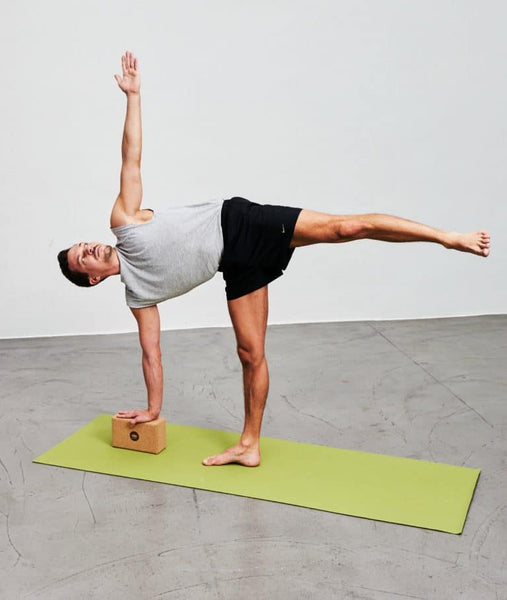
Crescent pose is a yoga pose that requires your full concentration and attention. This is where the block is particularly helpful as a support, because it serves as an extension of your hand to the floor, helping you to keep your balance better.
For Ada Chandrasana, start with the Trikonasana pose that we described earlier.
As you exhale, bring your torso straight to the floor, bending your right leg slightly and bringing your right hand to the floor in front of your foot. This is where the block comes into play. Place the yoga block vertically or horizontally on your mat and rest your hand on it. Now raise your upper body all the way up. Extend your left leg straight away from your body and spread your toes. Your left arm is stretched straight up.
Find balance and stability in this exercise and try to hold it for three breaths. Come out of the pose the same way as in Trikonasana.
The asana promotes your sense of balance, opens the sides of your body and trains your stability.
We hope you enjoy doing the exercises.
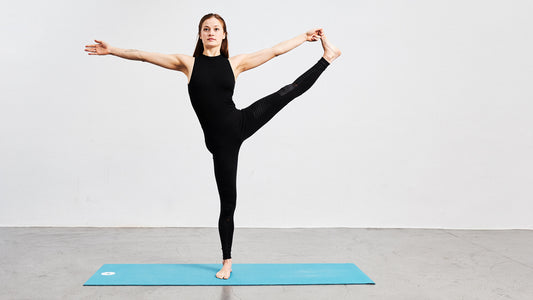
We humans love to set goals. There's nothing wrong with that either, because nothing gives us more stamina and energy than a vision to which we are...
Continue reading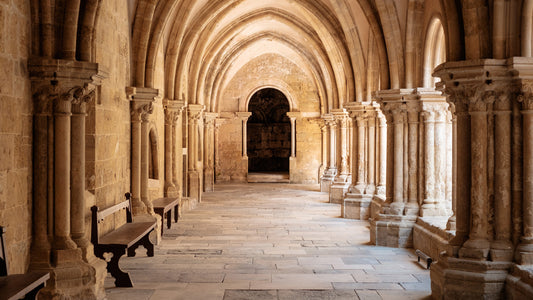
A monastery is a place of silence and contemplation - a place that more and more people in this noisy world long for. Within the walls, visitors e...
Continue reading
There are no comments yet. Be the first to leave a comment!